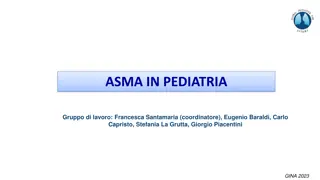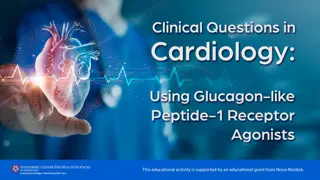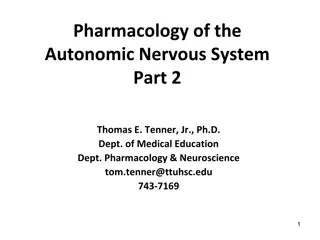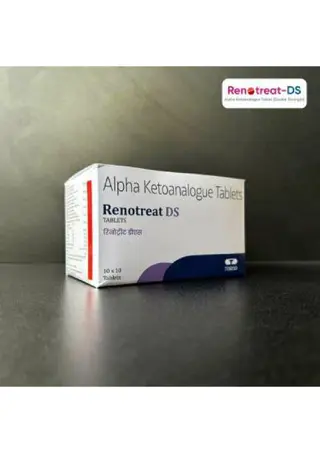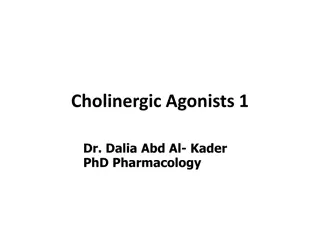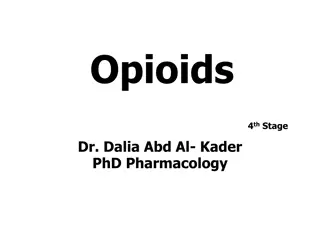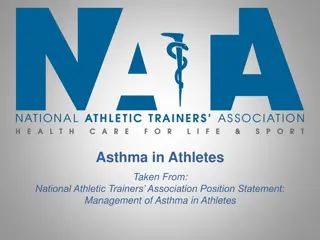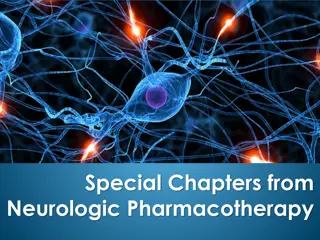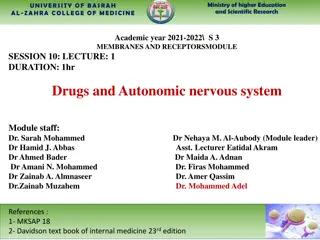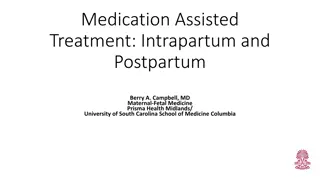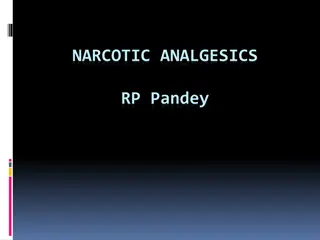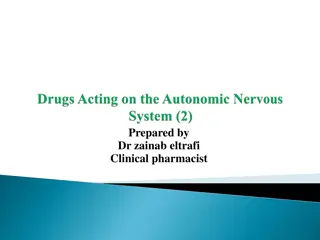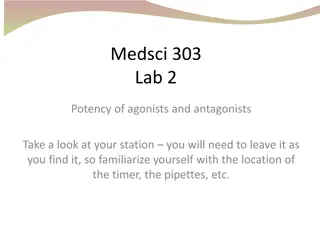ASMA IN PEDIATRIA
Pediatric asthma guidelines for children aged 5 years and above, outlining diagnosis criteria, symptom patterns, and treatment recommendations based on GINA 2023. The content covers characteristics suggestive of asthma, including recurrent non-productive cough, wheezing, and shortness of breath, and
3 views • 30 slides
Comprehensive Update on Type 2 Diabetes Management and Cardiovascular Health
This update covers key aspects of managing type 2 diabetes and addressing cardiovascular risks, including discussions on GLP-1 receptor agonists, patient safety concerns, evidence-based recommendations, and individualized therapy approaches. It also includes a patient case study highlighting the imp
3 views • 52 slides
GLP-1 Receptor Agonists in HIV: Addressing Weight Gain Challenges
GLP-1 receptor agonists offer a promising therapeutic approach for weight management in individuals with HIV. Weight gain is a common issue, exacerbated by antiretroviral therapy, and can lead to metabolic risks. This presentation by Dr. Suman Srinivasa discusses the potential of GLP-1 receptor agon
2 views • 32 slides
Pharmacology of the Autonomic Nervous System Part 2 Summary and Learning Objectives
Explore the pharmacology of the autonomic nervous system focusing on cholinergic and adrenergic agents. Learn about cholinomimetics, direct and indirect acting cholinergic agonists, their therapeutic indications, and adverse effects. Discover the mechanism of action and uses of nicotinic agonists. D
1 views • 44 slides
Clonisor — 150 | Torso
Clonisor is used to treat high blood pressure (hypertension). Lowering high blood pressure helps prevent strokes, heart attacks, and kidney problems. Clonidine belongs to a class of drugs (central alpha agonists) that act in the brain to lower blood
1 views • 1 slides
Overview of Anxiety Disorders and Antianxiety Drugs
Anxiety disorders are conditions characterized by excessive worry and fear that can interfere with daily life. Common types include generalized anxiety disorder, panic disorder, phobias, and OCD. Treatment options include psychotherapy and anxiolytic drugs such as benzodiazepines, 5HT1A agonists, be
0 views • 25 slides
Understanding Cholinergic Neurons and Agonists in Pharmacology
Cholinergic neurons play a vital role in neurotransmission by utilizing acetylcholine (ACh) as a neurotransmitter. This neurotransmission involves steps like synthesis, storage in vesicles, release, receptor binding, degradation, and recycling of choline and acetate. Choline acetyltransferase cataly
0 views • 30 slides
Pharmacology of Ovulation-Inducing Drugs
Understanding the mechanism of ovulation and hormonal regulation is key in classifying drugs used to induce ovulation. This lecture covers the pharmacology of different groups of drugs, their mechanisms of action, administration protocols, indications, efficacy rates, and adverse effects. Antiestrog
0 views • 6 slides
Understanding Opioids: Pharmacology and Clinical Applications
Opioids are essential in treating severe and chronic pain, whether malignant or nonmalignant. They are classified based on chemical structure, aiding in identifying potential cross-sensitivity in patients. Opioid agonists interact with specific receptors in the central nervous system and peripheral
0 views • 45 slides
Management of Asthma in Athletes: Important Considerations and Treatment
Asthma in athletes can impact performance and health, with triggers like exercise-induced asthma posing challenges. Key considerations include having rescue inhalers available, regular asthma management examinations, and proper warm-ups. Treatment for exercise-induced asthma often involves beta2-ago
0 views • 8 slides
GLP-1 Medications The Future of Effective Weight Loss
The rise of GLP-1 medications as a groundbreaking solution for medical weight loss. It delves into the science behind GLP-1 receptor agonists, their benefits, and the growing body of research supporting their use. Additionally, it examines the increa
1 views • 2 slides
Pharmacotherapy Overview of Parkinson's Disease and Related Disorders
Overview of pharmacological treatment options for Parkinson's disease and related conditions like choreatic dyskinesias, spastic disorders, and myasthenia gravis. Describes the degenerative process of Parkinson's disease, its symptoms, and the pharmacological interventions targeting dopamine deficit
0 views • 26 slides
Understanding Autonomic Nervous System and Clinical Applications in Medicine
This academic session covers the effect of autonomic nervous system stimulation on various systems, clinical diseases, pathophysiological changes, disease management guidelines, and clinical applications of autonomic drugs. Common clinical applications of autonomic receptors agonists and antagonists
0 views • 23 slides
Medication-Assisted Treatment in Intrapartum and Postpartum Care
Explore guidelines for medication-assisted treatment during intrapartum and postpartum periods, emphasizing pain management strategies for opioid-dependent patients. Tips include adjusting dosages, adding NSAIDs, and considering opioid agonists with high mu receptor affinity. Careful monitoring and
0 views • 12 slides
Cardiovascular Outcomes Trials with GLP-1 Receptor Agonists
GLP-1 receptor agonists are newer non-insulin-based glucose-lowering therapies with demonstrated cardiovascular benefits. This educational module covers completed CVOTs involving GLP-1 receptor agonists, treatment options for type 2 diabetes, study designs, results, and a timeline of new treatment o
0 views • 47 slides
Investigating the Impact of Weekly Incretin on Cardiovascular Events in Diabetes
Individuals with type 2 diabetes have an increased risk of cardiovascular events compared to those without the condition. Research indicates that certain GLP-1 receptor agonists have shown promising results in reducing cardiovascular events in diabetic patients with specific HbA1c levels. However, t
0 views • 69 slides
Overview of Narcotic Analgesics and Opioids
Narcotic analgesics, such as opiates and opioids derived from opium, interact with specific opioid receptors in the body to produce analgesic effects. Different opioid receptors have varying effects, with mu (MOP) being a good analgesic but with adverse effects, delta (DOP) and kappa (KOP) have nuan
0 views • 6 slides
Understanding Adrenergic Agonists and Their Classification
Sympathomimetic amines like epinephrine, norepinephrine, isoproterenol, and dopamine are catecholamines with high potency but poor CNS penetration. Noncatecholamines like phenylephrine and ephedrine have longer half-lives. Learn about direct-acting, indirect-acting, and mixed-action adrenergic agoni
0 views • 25 slides
Pharmacology Lab Equipment and Safety Guidelines
Explore the setup and procedures of a Pharmacology lab focusing on agonists and antagonists potency testing. Learn about equipment, tissue suspension, lab safety, lab plan, and health precautions. Follow instructions for conducting experiments, recording data, and cleaning up. Utilize resources prov
0 views • 28 slides
